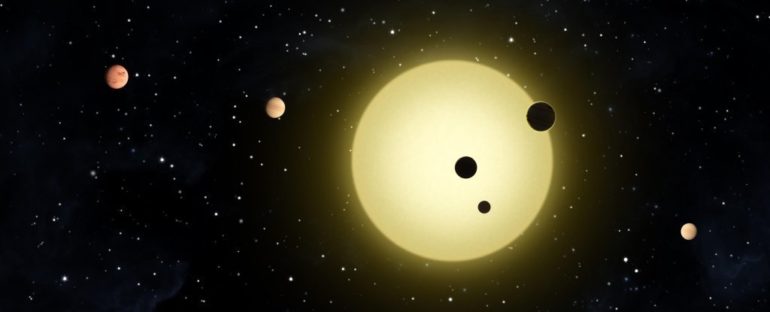In our early Solar System, a gigantic protoplanetary disk of dust, rock and gas swirled around the newly formed Sun. Some of that material eventually bound together through gravity to form the adolescent versions of the planets we know today – including our home, Earth.
New research published in the journal Science has helped to confirm whether rocky planets, similar to Earth and our neighbors Venus and Mars, as opposed to large gaseous planets like Neptune and Jupiter, possess a similar percentage of heavy elements compared to their home stars.
A team of researchers gathered data from a collection of 32 low-mass exoplanets found to orbit 27 stars that are similar in size and spectral type to the Sun.
Astronomers can gauge the chemical composition of stars by analyzing light that passes through their stellar atmospheres. Through spectroscopic survey, gaps appear in the frequency band of light that indicate which elements are present in the star.
“The abundances of elements in the atmospheres of main-sequence stars reflect their bulk composition (except the lightest elements) within a few percent, which meteorite measurements have shown to be valid for the Sun,” the study authors explain.
Through this process, the researchers were able to gain an accurate picture of the ratios of heavy elements in the exoplanet host stars they targeted.
“We analyzed spectra of 21 host stars of the selected planets (HD 80653 does not have an available spectrum) and measured their atmospheric chemical compositions. We determined the abundances of magnesium (Mg), silicone (Si), and iron (Fe) in the host stars, which are the major rockforming elements,” they write.
Astrophysicists have theorized that the abundance of heavier elements – like iron and magnesium – in a protoplanetary disk is likely mirrored in the star anchoring the solar system, as the during the formation phase, the same materials would have been present.
This means that rocky planets and their stars are likely to share ratios of heavy elements in their overall mass. But just how closely linked those ratios are has not been entirely clear.
“Theory predicts that the Fe/Si and Mg/Si abundance ratios in stars and planets remain very similar during the planet formation process. The atmospheric abundances of refractory elements (such as Mg, Si, and Fe) of solar-type stars are therefore considered a proxy of the composition of the initial protoplanetary disk,” note the authors.
Using the exoplanets’ masses, radii, and models of planetary interiors, the researchers calculated the possible iron-mass fraction of each planet in the sample, considering that both iron may be present only in the core, and that iron could be present in the core and in the mantle of each planet.
Each planet’s iron-mass fraction was then compared with the iron-mass fraction of the protoplanetary disk, which was derived from the host star’s composition.
The authors found that the iron fractions of the stars and the planets that orbit them correlated with one another, but not on a 1:1 basis. This suggests that subtle differences in the distribution of elements in the protoplanetary disk, and processes relating to planet formation, play a significant role in determining a rocky planet’s final chemical composition.
While there were slight differences in the abundance of heavier elements between stars and their orbiting planets, the results provide support for deriving the chemical compositions of rocky planets from stellar abundances of major rock-forming elements such as iron, magnesium, and silicon, something that has been assumed in previous studies.
Additionally, results from the new paper note that super-Earth and super-Mercury class exoplanets appear to have differing chemical compositions, which suggests differences in their planetary formation processes – data that will be handy for future exoplanetary research.
The study was published in the journal Science.



